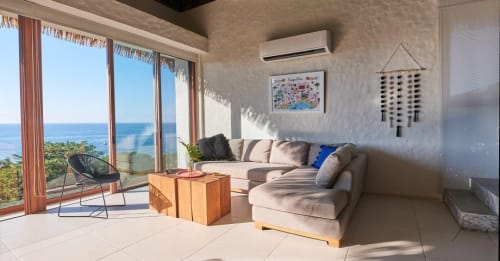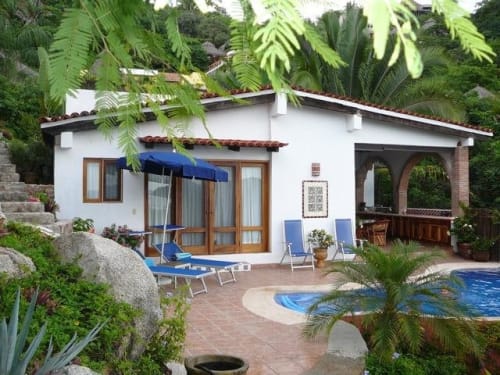Sayulita Legends: Santos Hernandez Ramirez

Full Name: Santos Hernandez Ramirez
Age: 46
Where are you originally from?
San Andres Cohamiata Jalisco, a Wixárika (Huichol) village located in Mezquitic, Jalisco, Mexico, that governs itself autonomously.
How long have you lived in Sayulita?
9 years
Tell me a little bit about yourself?
I work in the field of art, specifically creating cow and ceramic heads with Wixárika art. Despite not having formal schooling, I have been taught by my grandparents about culture, and I use this knowledge to support my family. The heads I create are considered sacred and must be cleansed of negative energy before being sold.
Each head I create has its own unique meaning and symbolism. The process of making each piece of art is time-consuming and can take anywhere from 9 to 10 days to complete. To create these works of art, I use a combination of thread and beeswax. The thread is carefully selected and dyed using natural materials such as cempasuchil, avocado, and cotton. The threads are then carefully attached to the beeswax base one by one using only a fingernail. Despite the delicate nature of the art, the finished product is surprisingly durable and can last up to 80 years.
What initially brought you to Sayulita?
I was headed straight to Puerto Vallarta and an American friend named Katie invited me to visit Sayulita and work at Evoke the Spirit in 2014.
What are the biggest changes you have seen in Sayulita over the years?
It was once a small and peaceful town with an abundance of nature, but it’s impressive to witness the number of individuals who have discovered this hidden gem.
Where is your favorite spot in all of Sayulita?
My favorite place is “El Punto de Malpasos” which is also known as “Xayukita,” meaning “the house of the fly.” It represents the soul of everything and is the center of energy, it serves as a ceremonial center for us.
What is your favorite memory of Sayulita?
In 2015, I made altars for Day of the Dead for the first time. In 2018, I organized the event on Flag Street. We layed down a banner and decorated it with amaranth drawings. We lined the street and used 12 corn plants to represent life, we refer to this as “Niwetsiko”, which means mother and the Cempasúchil flowers to symbolize the souls of the dead.
The Ojos de Dios, or God’s Eyes, were hung up all the way down the street in four colors. Blue, representing water, red representing blood and sacredness, yellow representing the sun, and white the clouds and the departed souls. To bless the visitors, I used water from Alta Vista, a sacred space in the jungle. The bowl of water was left from the morning to the evening so that it could absorb the energy of the dead and bless the people with it.
If you could change one thing in Sayulita, what would it be?
I would like to introduce cultural education to young children by having conversations with students to increase their awareness and educate them about the culture that surrounds them. Prioritizing culture and history and educating younger generations about the rich traditions of this country is crucial.
Anything you would like to share with our 40K+ readers?
Come and visit, you can find me at Evoke the Spirit and I’m here to help and provide information about the Wixárika culture. The Huicholes are here to serve the public. If you want to learn about the culture, we are at your service.







